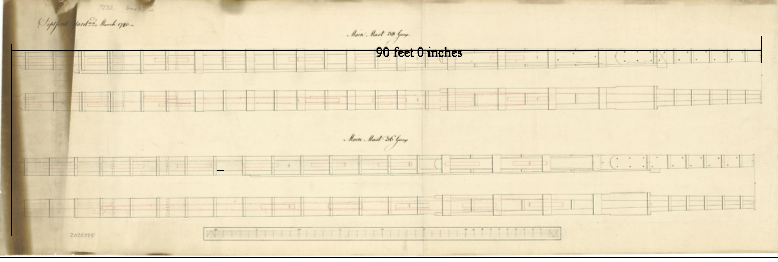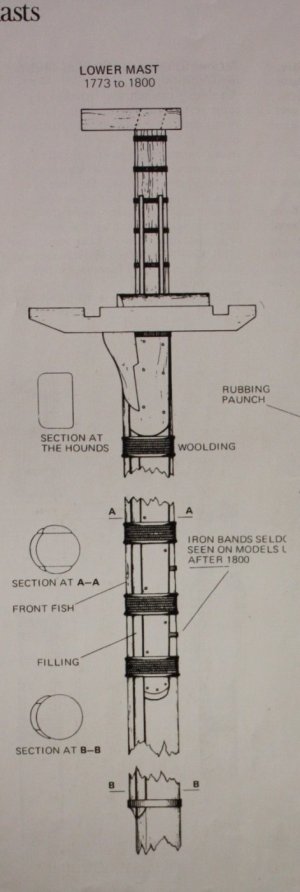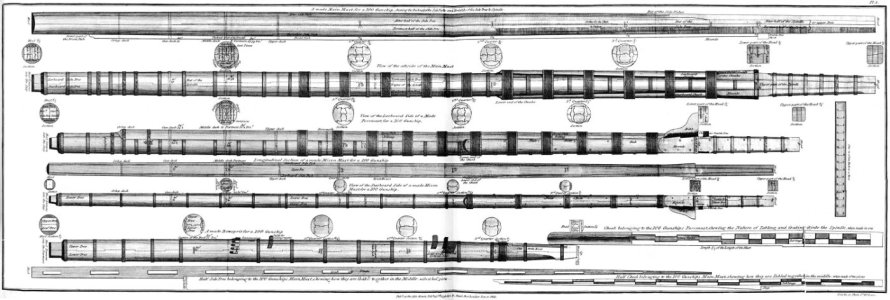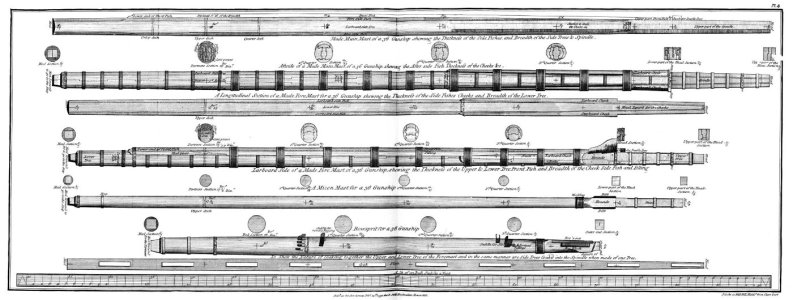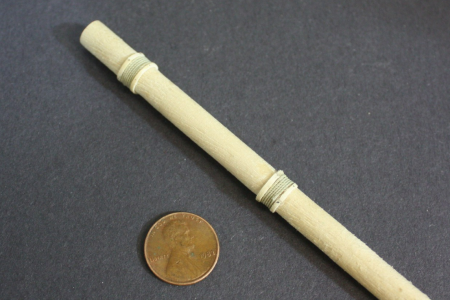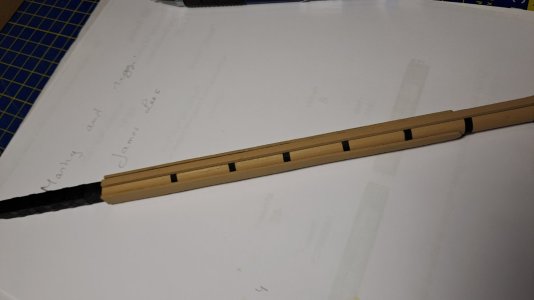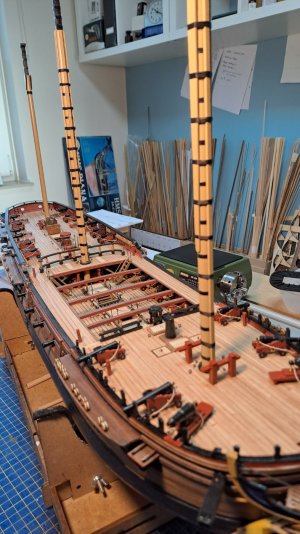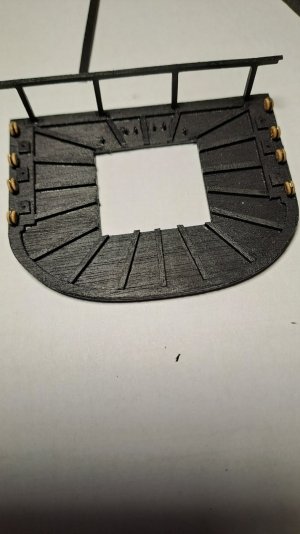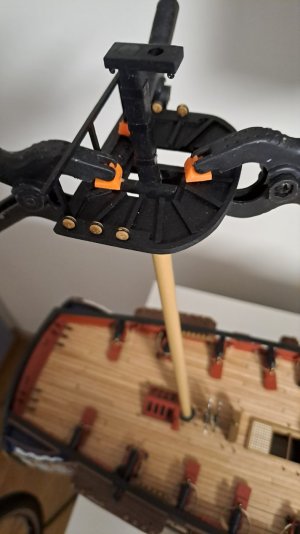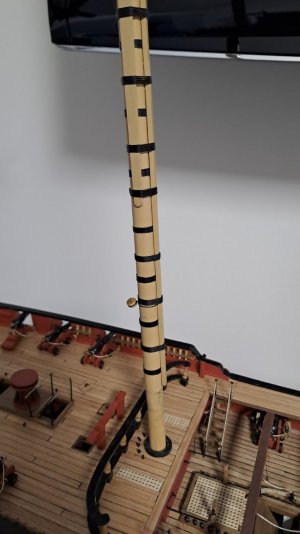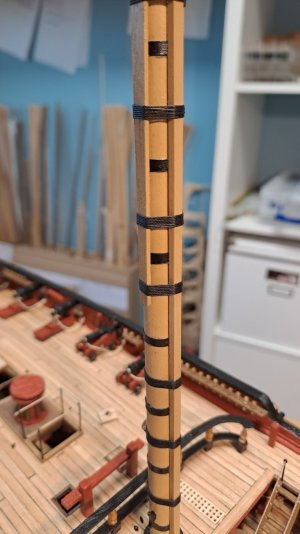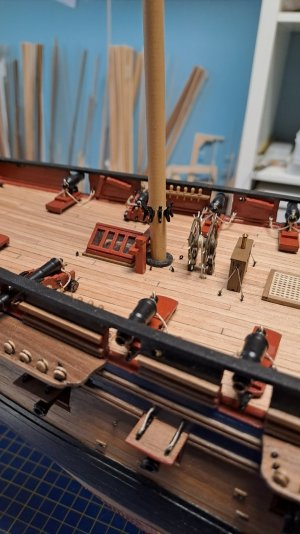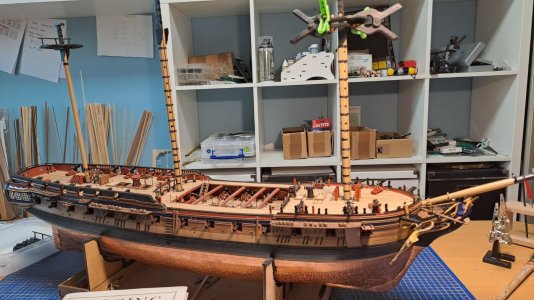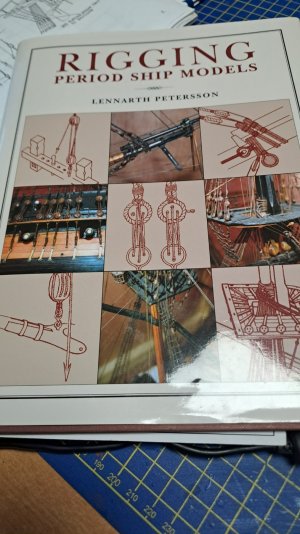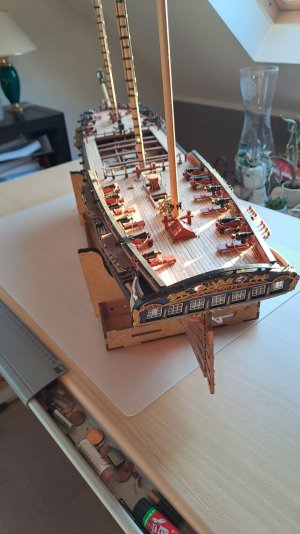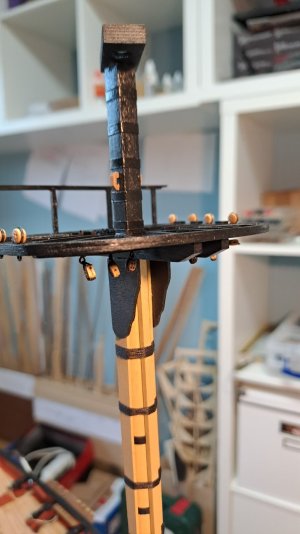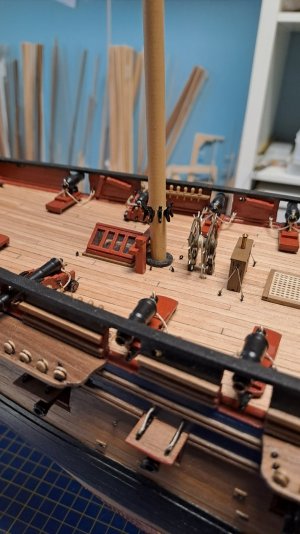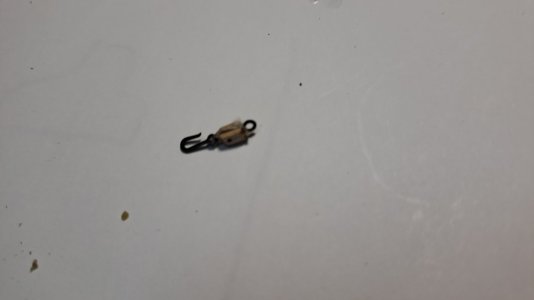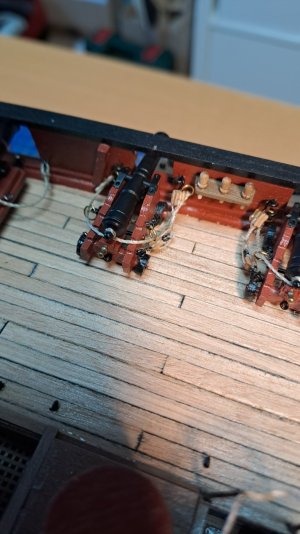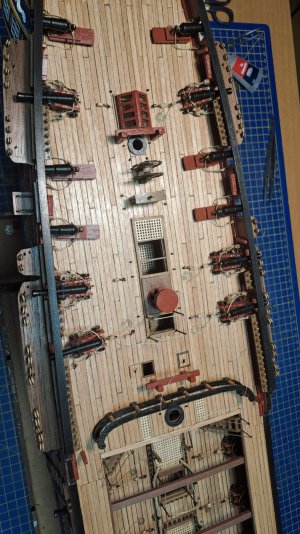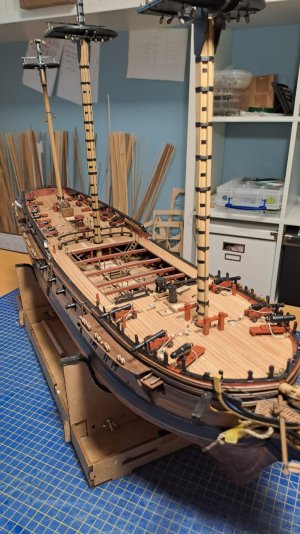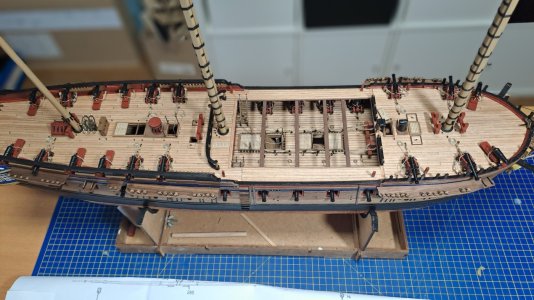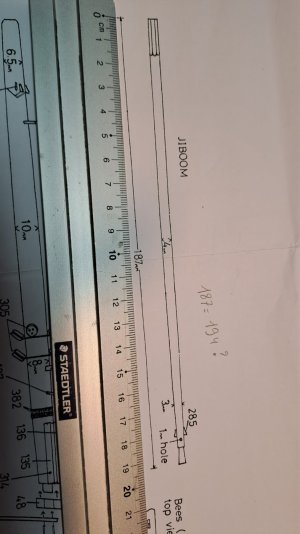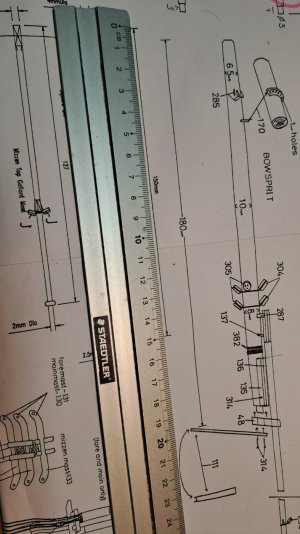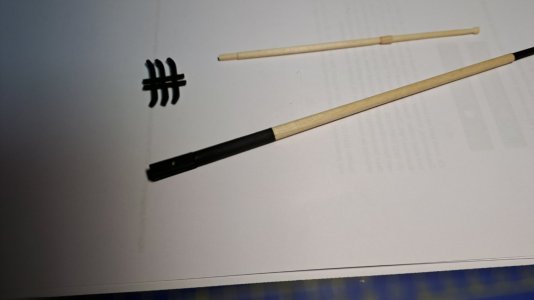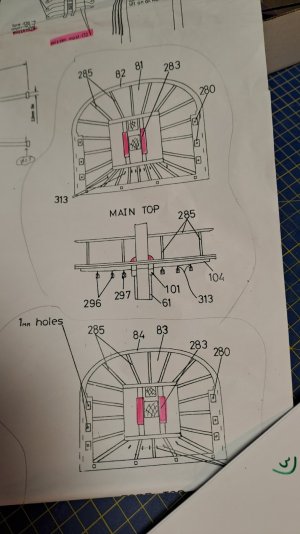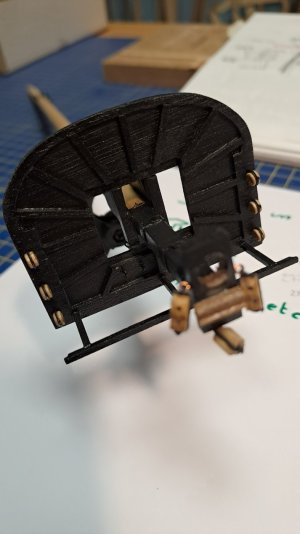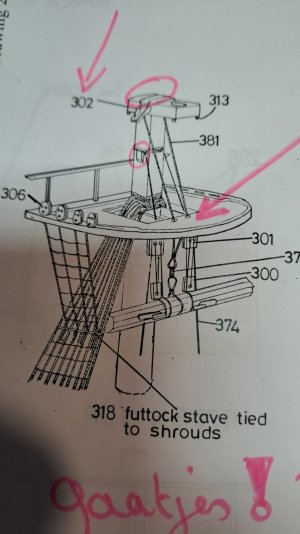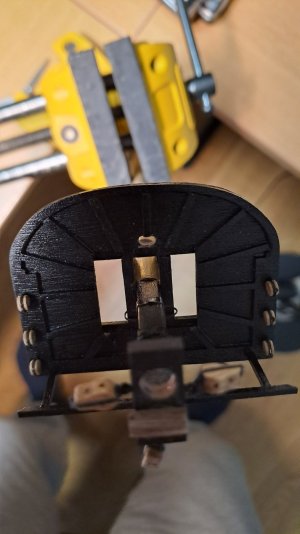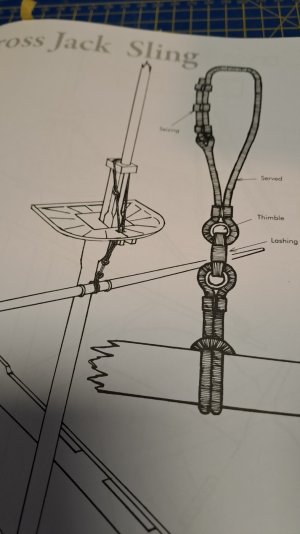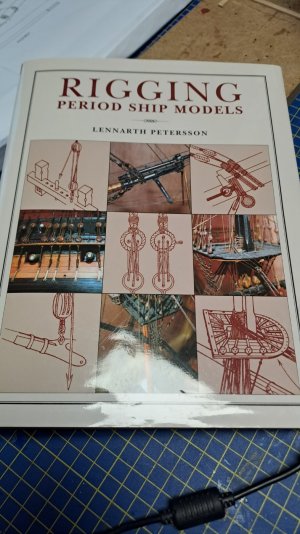For the lucky one who will build the Diana later: I have found another major error in the instructions!
To simulate the iron reinforcement bands around the mast, you have to glue 2.5mm strips of the supplied cartridge paper around the dowel (mast).
But the drawings state (see photo) that three strips are also glued around the 2x3 mm strip (in the front of the mast). This is wrong! The instruction text clearly states that the strips must be glued under the 2x3mm strip. See also photo of the box.
I added some pictures of how to most easily (in my opinion) glue the cartridge straps around the dowel.
And for attaching the woolding (with black thread) there is a simple trick which is applied to the plan of the Amati HMS Fly...
Hopefully it helps!
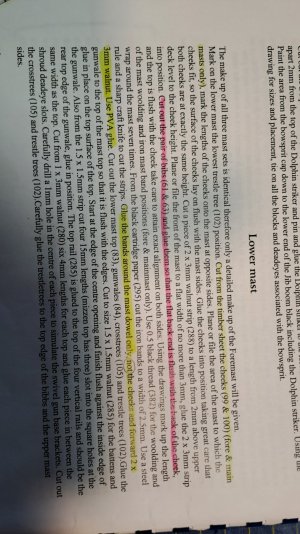
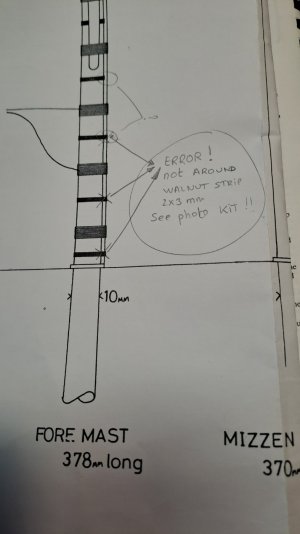
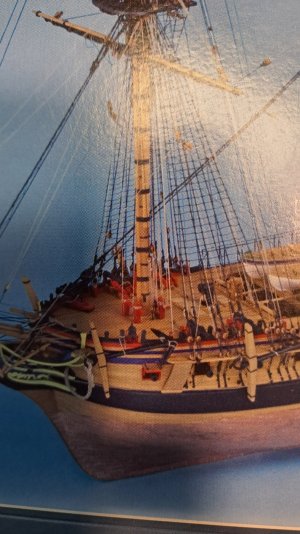
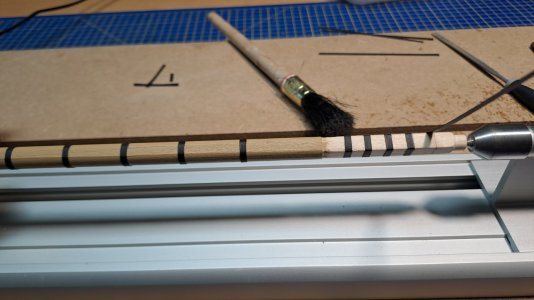
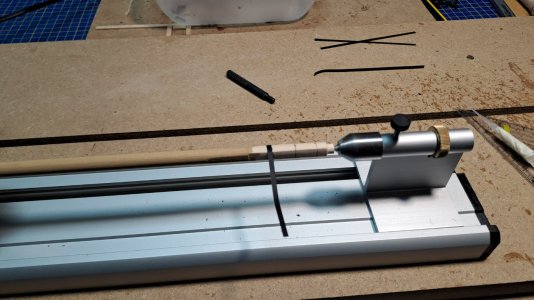
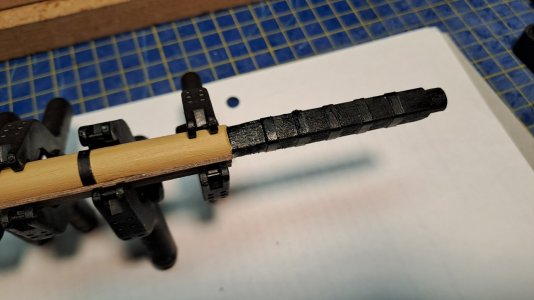
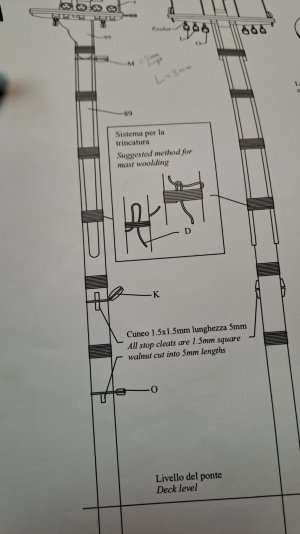
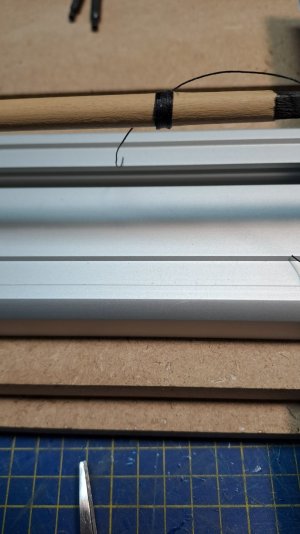
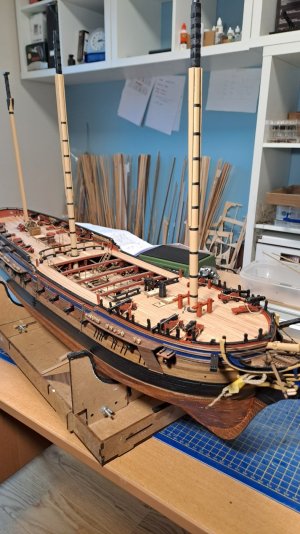
To simulate the iron reinforcement bands around the mast, you have to glue 2.5mm strips of the supplied cartridge paper around the dowel (mast).
But the drawings state (see photo) that three strips are also glued around the 2x3 mm strip (in the front of the mast). This is wrong! The instruction text clearly states that the strips must be glued under the 2x3mm strip. See also photo of the box.
I added some pictures of how to most easily (in my opinion) glue the cartridge straps around the dowel.
And for attaching the woolding (with black thread) there is a simple trick which is applied to the plan of the Amati HMS Fly...
Hopefully it helps!













